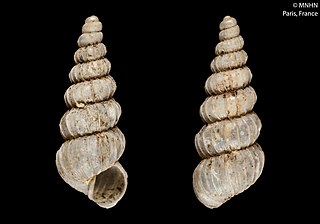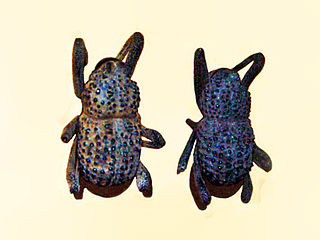
The American Revolutionary War, also known as the Revolutionary War or American War of Independence, was a military conflict that was part of the broader American Revolution, where American Patriot forces organized as the Continental Army and commanded by George Washington defeated the British Army.

African Americans, also known as Afro-Americans or Black Americans, are an ethnic group consisting of Americans with partial or total ancestry from any of the Black racial groups of Africa. African Americans constitute the third largest racial or ethnic group in the U.S. after White Americans and Hispanic and Latino Americans. The term "African American" generally denotes descendants of Africans enslaved in the United States.

Benjamin Franklin was an American polymath, a leading writer, scientist, inventor, statesman, diplomat, printer, publisher, and political philosopher. Among the most influential intellectuals of his time, Franklin was one of the Founding Fathers of the United States; a drafter and signer of the Declaration of Independence; and the first postmaster general.

Christopher Columbus was an Italian explorer and navigator from the Republic of Genoa who completed four Spanish-based voyages across the Atlantic Ocean sponsored by the Catholic Monarchs, opening the way for the widespread European exploration and European colonization of the Americas. His expeditions were the first known European contact with the Caribbean and Central and South America.

Latin America is a collective region of the Americas where Romance languages—languages derived from Latin—are predominantly spoken. The term was coined in France in the mid-19th century to refer to regions in the Americas that were ruled by the Spanish, Portuguese, and French empires.
March 8 is the 67th day of the year in the Gregorian calendar; 298 days remain until the end of the year.

North America is a continent in the Northern and Western Hemispheres. North America is bordered to the north by the Arctic Ocean, to the east by the Atlantic Ocean, to the southeast by South America and the Caribbean Sea, and to the west and south by the Pacific Ocean. Greater North America includes the Bahamas, Bermuda, Canada, the Caribbean, Central America, Clipperton Island, Greenland, Mexico, Saint Pierre and Miquelon, Turks and Caicos Islands, and the United States.

Native Americans, sometimes called American Indians, First Americans, or Indigenous Americans, are the Indigenous peoples of the United States or portions thereof, such as American Indians from the contiguous United States and Alaska Natives. The United States Census Bureau defines Native American as "all people indigenous to the United States and its territories, including Native Hawaiian and Other Pacific Islanders, whose data are published separately from American Indians and Alaska Natives". The U.S. census tracks data from American Indians and Alaska Native separately from Native Hawaiian and other Pacific Islanders, who include Samoan Americans and Chamorros.

South America is a continent entirely in the Western Hemisphere and mostly in the Southern Hemisphere, with a considerably smaller portion in the Northern Hemisphere. It can also be described as the southern subregion of the Americas.

The War of 1812, called the American War of 1812 in Britain, was fought by the United States and its indigenous allies against the United Kingdom and its own indigenous allies in British North America, with limited participation by Spain in Florida. It began when the United States declared war on Britain on 18 June 1812. Although peace terms were agreed upon in the December 1814 Treaty of Ghent, the war did not officially end until the peace treaty was ratified by the United States Congress on 17 February 1815.

The United States of America, commonly known as the United States or America, is a country primarily located in North America, between Canada and Mexico. It is a federation of 50 states, a federal capital district, and 326 Indian reservations. Outside the union of states, it asserts sovereignty over five major unincorporated island territories and various uninhabited islands. The country has the world's third-largest land area, largest maritime exclusive economic zone, and the third-largest population, exceeding 334 million.

Metaphidippus is a genus of jumping spiders that was first described by Frederick Octavius Pickard-Cambridge in 1901. The name is combined from Ancient Greek μετά "after, beside" and the salticid genus Phidippus.

The CONCACAF Champions Cup is an annual continental club football competition organized by CONCACAF. The tournament is contested by clubs from North America, Central America, and the Caribbean. The winner of the CONCACAF Champions Cup automatically qualifies for the FIFA Club World Cup.
The Jim Crow laws were state and local laws introduced in the Southern United States in the late 19th and early 20th centuries that enforced racial segregation, "Jim Crow" being a pejorative term for an African American. Such laws remained in force until 1965. Formal and informal segregation policies were present in other areas of the United States as well, even as several states outside the South had banned discrimination in public accommodations and voting. Southern laws were enacted by white-dominated state legislatures to disenfranchise and remove political and economic gains made by African Americans during the Reconstruction era. Such continuing racial segregation was also supported by the successful Lily-white movement.

A continent is any of several large geographical regions. Continents are generally identified by convention rather than any strict criteria. A continent could be a single landmass or a part of a very large landmass, as in the case of Asia or Europe. Due to this, the number of continents varies; up to seven or as few as four geographical regions are commonly regarded as continents. Most English-speaking countries recognize seven regions as continents. In order from largest to smallest in area, these seven regions are Asia, Africa, North America, South America, Antarctica, Europe, and Australia. Different variations with fewer continents merge some of these regions; examples of this are merging North America and South America into America, Asia and Europe into Eurasia, and Africa, Asia, and Europe into Afro-Eurasia.

American Samoa is an unincorporated territory of the United States located in the South Pacific Ocean, southeast of the island country of Samoa. Centered on 14.3°S 170.7°W, it is east of the International Date Line and the Wallis and Futuna Islands, west of the Cook Islands, north of Tonga, and some 500 kilometers (310 mi) south of Tokelau. American Samoa is the southernmost territory of the United States and one of two U.S. territories south of the Equator, along with the uninhabited Jarvis Island.

Volutaxis is a genus of predatory air-breathing land snails, terrestrial pulmonate gastropod mollusks in the family Spiraxidae.

Poropterus is a genus of beetle belonging to the family Curculionidae.
Piezogaster spurcus is a species of leaf-footed bug in the family Coreidae. It is found in Central America and North America.
















